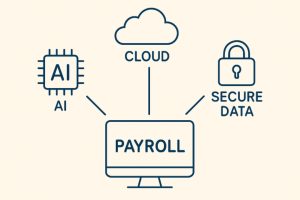How To Increase The ROI Of Digital Campaigns In The Cookieless Era

Currently, cookies represent the main source of information about the audience targeted by digital marketing campaigns. This data is used by brands and advertisers, as it allows them to better understand users and personalize content or make fundamental decisions to establish their marketing strategies.
Despite the fact that these data practically constitute the basis of advertising in digital media, at the beginning of this coming year 2023, the definitive disappearance of third-party cookies will finally take place, prompted by Google’s announcement to eliminate cookies in Chrome, which represents more than 50% of the global market share of internet browsers. Given the imminent arrival of this new paradigm of digital marketing, known as cookieless, experts specializing in technology applied to digital marketing warn that it is necessary to build a first party data ecosystem, with technological solutions, hand in hand with specialized partners.
Brands must rethink the way they do marketing, fully relying on first party data, which is responsible for improving the user experience on the website itself through information on payment methods, previous searches or language preferences, among others. . Despite the expectation generated and the need for brands and agencies to adapt to this new paradigm, at Programmads we estimate that more than 40% of agencies will wait until the last minute to make the paradigm shift towards cookieless, as happened last year. Thanks to our experience in countries such as Belgium, France, Holland, Portugal and Switzerland, in addition to Spain, we expect better forecasts for this year, althoughWe must not forget that we are almost 6 months away from the disappearance of third-party cookies, so it is a priority to start the adaptation process as soon as possible.
For us, anticipating means being ready to act tomorrow, taking advantage of the best technological solutions on the market. There are many alternatives, but it is a complex issue that requires creative and innovative solutions. This new way of doing marketing has an impact on the entire funnel process, on attracting new customers and on the retargeting process, as well as on the evaluation of campaign results.
For this reason, carrying out a correct segmentation of the public on which you want to impact will become somewhat complex, also implying an increase in the budget allocated to digital media. But let’s also see the positive side; Cookieless also has various benefits for advertisers: while user privacy is reinforced, brands have a unique opportunity to be able to strengthen their relationship with their public and have a closer, more direct and personalized contact.
Thanks to this new situation, brands will need to use new options, strategies and technologies, such as Machine Learning, focusing on getting new customers without having to rely on third-party cookies.
How To Increase The ROI Of Digital Campaigns In The Cookie Era
This scenario where third-party cookies disappear is optimal for encouraging companies to optimize their recruitment and personalization resources, fostering a closer relationship with their audience. In this way, companies and advertisers can offer much more accurate advertising to the needs of each consumer and of much higher quality than before, which translates into a potential increase in the success of their campaigns and sales. We believe that there are three key approaches for brands, agencies, and advertisers to continue their digital marketing operations: user trust, consent, and ease of data processing.
The first step that companies have to take in this scenario is to promote first party data . This process can go through user subscription or login to allow visitors to perform any activity on the page; in short, any process by which the user gives us explicit consent to be able to use their data within the web.
Companies must also use innovative technologies such as Artificial Intelligence or Machine Learning in order to simulate the behavior of their buyer persona and thus be able to adapt the brand strategy according to the needs that can be detected. This data modeling allows you to reinforce advertising strategies to maintain the level of campaign performance, or increase it, after the loss of third-party data.
Tools, such as those designed to obtain contextual data, can allow a much better understanding of the context of each of the user’s interactions with the brand, analyzing transactional, demographic or location data, and consequently offering advertising that is adapted to that. that each user is consuming at that moment.
Other alternatives can be found, for example, in Semantic Contextual Targeting, which, through the reading trends of Internet users, allows brands to be able to predict in the long term where users are and what types of content they are going to consume. in order to impact certain websites.
There are also practices such as the Walled Garden that make it possible for users to access certain websites without authenticating themselves on the server. It is a closed space, like Amazon or Facebook, in which it is easier to meet users. Thanks to this possibility, you can easily work on campaigns and create a segmentation adapted to the particular use cases of each brand.
On the other hand, the Devices IDS can identify the ID, and the email, associated with a certain device, which makes it easier to segment the users who visit the web and be able to show them advertising based on the group they are in.
Likewise, Google has also devised its own solutions for the digital marketing industry on unidentified models. This is the case of Privacy SandBox, which allows advertisers to have general data about users who have entered their website, or FLoC (Federated Learning of Cohorts), which allows group segmentation based on similar interests, so that we can have data on a defined group, but not specific data on each of its individuals.
In short, cookieless is undoubtedly a paradigm shift in digital marketing and will affect the way in which brands plan their campaigns, both in the way data is captured and in the way it is displayed. advertising to web users.
The effort to adapt to this new way of doing marketing is urgent given that companies that have not yet started this process have very little time. This transition is considered an obligation for companies that, by not having the necessary data, will not be able to carry out digital marketing campaigns correctly and will be forced to disappear from digital platforms , so their process onboarding to this new scenario is almost mandatory. For this reason, we encourage brands to have a plan that facilitates this transformation towards the cookieless era, for which it will be necessary to adopt and combine certain practices that can give them good results.
Brands and advertisers must have digital tools to help them capture, connect, analyze and amplify data. Without a doubt, we are facing a new beginning in the advertising industry where nothing will be the same as before, so the approach to our target audience must be innovative, always giving priority to the user.
Also Read: This Is How Forex Trading Works On The Go







